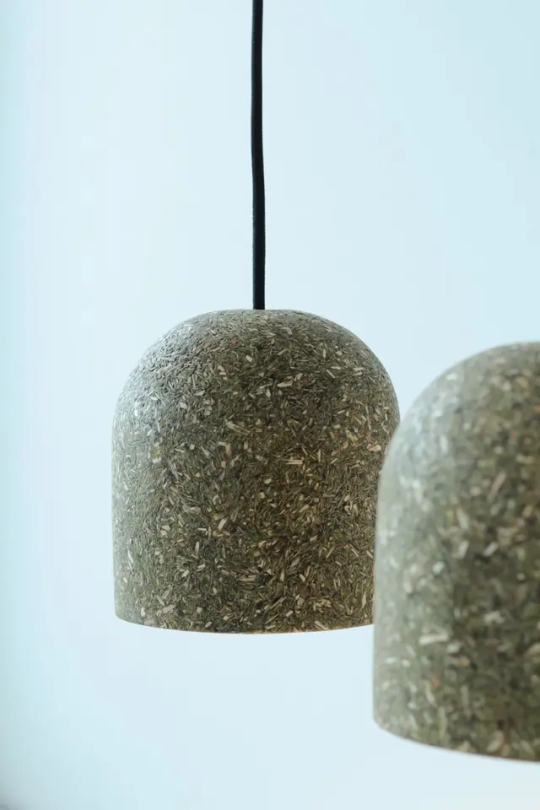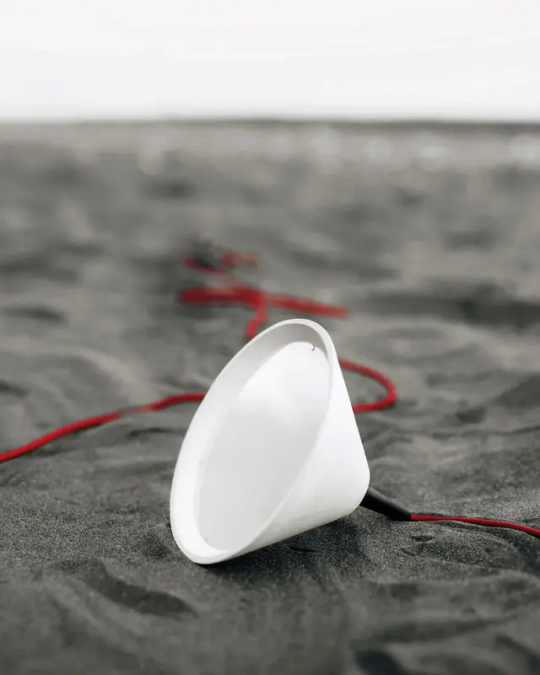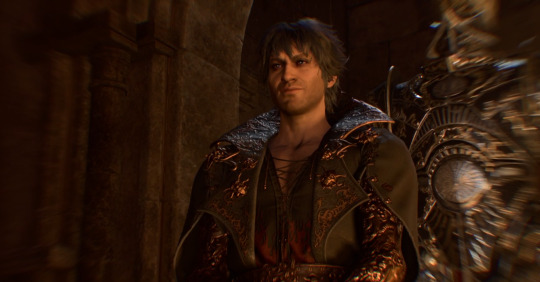#materials innovation
Explore tagged Tumblr posts
Text
When hops are harvested every autumn in Germany's Hallertau region - the world’s largest hops-growing area about an hour north of Oktoberfest - for every one kilogram of material inside the cones that can be used to brew beer, there are 3.5 kilograms of wasted biomass from the rest of the plant. That's a ratio that's roughly 20 per cent usable product to 80 per cent waste.
Some of the hops waste can be used for fertilisers, and a portion can be sold to biogas plants to produce energy. But the majority is unusable for farmers, who may be forced to rent additional farmland to dump piles of the waste away from their crops. The piles can ferment and emit greenhouse gases - and sometimes catch fire.

“We saw a huge potential in sourcing locally and also using a waste stream that was neglected by basically most people," HopfON entrepreneur Mauricio Fleischer Acuña told The Associated Press.
#solarpunk#solarpunk business#solarpunk business models#solar punk#startup#reculture#construction material#materials innovation#germany
320 notes
·
View notes
Text
When we think of sustainable materials, bamboo, cork, recycled stone and reclaimed teak often come to mind. These building and surface materials are used extensively in both residential and commercial projects, enough to solidify them as the eco-friendly future of established architectural practices.
But what if we went even further? Creative and experimental designers worldwide are embracing much more unusual sustainable materials in a wide range of projects, be these sturdy floorboards and insulating panels, or small-scale decorative elements such as lamps, trays, vases and other furnishings. With designs hailing from Singapore and Indonesia, as well as distant studios in Italy and Palestine, here are the materials of tomorrow.

Mogu’s mycelium floor tiles
Mushroom filaments may not seem like the sturdiest base for hardwearing floors, but the Italian designers behind Mogu would argue otherwise. Transformed into resilient tiles appropriate for luxury residences and even commercial spaces, the mycelium structure is topped with a layer of bio-based resin, granting it resistance to scratches and abrasions rivalling traditional flooring materials.

Orange peel and pine needles make up the sustainable lampshades by Caracara Collective
Turning orange peel into useable furnishings and décor pieces is no small feat, yet the people behind the circularity-focused Caracara Collective in Finland have mastered this singular art. Inspired by the abundance of the natural, inherently sustainable materials around them, the designers created a series of lampshades made of orange peel, as well as pine needles from discarded Christmas trees.
As the collective puts it: “It takes around 20 squeezed oranges to create one lampshade. In other words, each lampshade is the by-product of someone drinking two litres of orange juice.”

Markos Design’s Ostra lamp, made of discarded oyster shells
Discarded oyster shells are similarly repurposed on the island of Cyprus, transformed by Markos Design into Ostra, a ceramic-like biomaterial. Ostra is worked into statement lamp designs, naturally hardwearing thanks to the oysters’ high concentration of calcium carbonate, which also lends cement and concrete considerable strength.
#solarpunk#solar punk#reculture#solarpunk aesthetic#eco-design#materials innovation#solarpunk futures
139 notes
·
View notes
Text
Researchers at the Center for Advanced Bioenergy and Bioproducts Innovation (CABBI) have achieved a significant breakthrough that could lead to better—and greener—agricultural chemicals and everyday products. Using a process that combines natural enzymes and light, the team from the University of Illinois Urbana-Champaign developed an eco-friendly way to precisely mix fluorine, an important additive, into chemicals called olefins—hydrocarbons used in a vast array of products, from detergents to fuels to medicines. This groundbreaking method offers an efficient new strategy for creating high-value chemicals with potential applications in agrochemicals, pharmaceuticals, renewable fuels, and more.
Continue Reading.
#Science#Chemistry#Materials Science#Fluorine#Center for Advanced Bioenergy and Bioproducts Innovation#CABBI
209 notes
·
View notes
Text
I was not expecting Odysseus to make a friggin’ Aeolus-powered jetpack
#short kings in stem
#epic the musical#the vengance saga#odysseus#posideon#bag of winds#the dude is innovative I’ll give you that#and then the Naruto move he pulled during the Vengeance Saga stream#i was gobsmacked#lmao#meme material fr#I enjoyed it#it was pretty fun#very funny#Hermes said not to open the bag#then Odysseus opens the bag#i was laughing so hard
31 notes
·
View notes
Note
Genuinely curious as to if you asked permission to use Rachel’s characters and she said yes or if you just decided Lore Olympus is popular enough to make a fan comic of and are hoping you don’t receive a cease and desist? Can anyone create a remake comic of original content and just change what you don’t like about it and it’s considered legal if you say the characters belong to the original creator? There is plenty of disappointing media out there that could be remade. I understand you cannot use their characters for profit so is just posting it ok?
Yes, anyone can, because it's called fanfiction lmao Obviously in my case the term "fan" is being used loosely here as at this point it's more like "foe"fiction LMAO but the same principles apply. Unless I try to claim LO is my own creation or make a profit off Rekindled, I should be in the clear. If legal action was taken against me then it would set a precedent against all forms of fanfiction, rewrite, redraw, etc. content around LO which are all essentially doing the same thing Rekindled is doing. I think people tend to view Rekindled as somewhat of an "exception" that's vulnerable to legal action because it's an actual weekly comic put into practice in the same playing field as LO (though they're on massively different bases obviously LOL), but there's not much more separating it from the LO redraw accounts or even the genuine fan accounts that have learned how to draw in Rachel's style (and use it to make their own LO self-inserts and whatnot). I had the time and resources and experience to do what I do through Rekindled, but every redraw, rewrite, fanfiction, etc. account are making the exact same statement I am, whether intentionally or not - "I do/don't like the canon, but/so here's what I think it would be like if it went like this".
There is definitely plenty of media out there that could be remade, and a lot of them are by the fanfiction writers out there who are filling that niche within their respective fandoms. LO is the one I want to do because it's the one that interests me and compels me the most to rewrite.
Not to mention, it's already a bold statement in and of itself to say that I'm "using Rachel's characters", a statement that likely wouldn't hold up in court LMAO Her "characters" are literally just stylized self-insert versions of public domain figures. She did not write The Hymn to Demeter. She did not create Hades, or Persephone, or Hecate, or any of the other characters she writes about. She does not own an entire religion or its deities. The only thing that she really "owns" is the licensing rights to the name "Lore Olympus", and while the style of LO is very unique and identifiable, you can't trademark/copyright a style because that uproots the entire foundation of what art is (ironically no one has had an original idea SINCE the Greeks, we all just learn and adapt our styles based on other artists that we get inspired by and learn from).
Shit, there are series completely unrelated to LO that get harassed or otherwise warned that they could cross into "legal territory" with LO just because they're Greek myth comics. Punderworld, Theia Mania, H x P Ficlets, all of these are comics that also tackle the H x P myth, and while they aren't attempting to do the same thing as Rekindled (as they exist on their own terms) it's really disappointing when I see people talk about these comics purely through the scope of Lore Olympus as if LO invented Greek myth. If WT/Rachel tried to pull rank over the story's "characters", they'd be picking a fight with every other Greek myth comic, book, movie, etc. and they oughta know that's not a fight they're gonna win lol
So everything beyond LO's branding is, in and of itself, fanfiction. Rekindled is just another level deeper by being fanfiction of a fanfiction. As long as I'm not profiting off Lore Olympus' namesake or distributing my work with the misconception that I created LO, it's legally fine. Morally, I'm sure it doesn't exactly make me a saint to do it, it definitely took a lot of hubris for me to say "yeah I don't like how you wrote your story enough that I felt the need to rewrite it completely" and I wouldn't blame anyone for thinking doing so is icky. There are certain lines I won't cross - I don't use the general LO hashtags because my content is very critical and my work isn't really for the fans, I don't encourage anyone to "show Rachel" what I do here because none of what I do here is obligated to be seen by her (and I know it wouldn't be in her best interest to see it anyways, she's literally said that she doesn't like criticism so why tf would I wanna show her a comic that exists to criticize her work lol), and I'm not planning on posting it to Webtoons because that's Rachel's territory. I don't want to overstep both in the legal sense and in the moral one. I think it's more than enough for me to just post my stuff here for the people who are seeking it, and not profit off it or directly affiliate it with LO/Rachel beyond crediting.
All that said, in a moral and legal sense, what I'm doing is literally the basis of fanfiction, and I wouldn't be going to such lengths and spending this much time every week putting out episodes every week if I never cared about LO and how it made us all feel, even if some of us don't love it as much as we used to.
#also just as some food for thought and because i couldn't find a place to fit it in the post#sonic mania ended up being one of the best games in the sonic franchise in over a decade and it was made by a sonic fangame dev#a lot of shakespeare's most beloved plays were also 'stolen' from other works#and don't get me started on the screenwriting industry#many of the books they adapt into film are completely rewritten from weaker source material or material that just won't work in movie form#obviously sometimes it's for worse and not better#but rewriting works you're dissatisfied with is an age old tradition IMO#fifty shades of grey exists and it was literally twilight fanfiction when it started LMAO#innovation is found in fandoms#i could just be haphazardly defending myself tho LOL maybe i'm just an asshole#lore olympus critical#lo critical#anti lore olympus#antiloreolympus#ask me anything#ama#anon ama#anon ask me anything#lore rekindled#lore rekindled comic#lore rekindled ama
104 notes
·
View notes
Photo

WERNER SOBEK HAUS R128, 2000 Stuttgart, Germany Image © Zooey Braun, Roland Halbe
#emission-free#emissonsfrei#house#residential#climate change#stuttgart#werner sobek#architect#german architecture#german houses#residential design#recyclable#archdaily#dezeen#innovative#innovation#recyclable material#photograph#juliaknz#ignant#science#construction
252 notes
·
View notes
Text

I love this image of Gortash from the Emperor's story.
Look at him.

Look at his smug ass. He came to ruin both the Empreror and Stelmane's lives and is so proud of that.
#bg3 spoilers#baldurs gate 3#enver gortash#lord enver gortash#no literally he looks like a smug cat#evil brat boyfriend material#really everyone keeps telling levi how awful gortash is and levi is just#levi: a smart sneaky man I like that ;))'#levi: Trader. Innovator. Inventor. Scientist. Tyrant. What else do you need in a man?#karlach: a conscience???#levi: don't be ridiculous a man with conscience would mind my killing sprees. I need a man who will look at me#levi: all monstrosious and covered in blood and guts#levi: and would ask himself: how can I profit from that?#levi: basically I need someone who could make my violence tendencies serve our cause. earn some money conquer some lands#karlach: I hate what I see your point#levi: but you DO see my point!
64 notes
·
View notes
Text
i know its silly to keep harping on that basketball pump IV needle person but their "survival is survival" statement pisses me off so bad. its such a misinformed concept of even just the mechanics of basic animal survival. humans are not a solitary predator species. humans are social apes and survival is something we do collectively. thats how come we humans are so good at "survival" via things like sanitation and proper tool use and standarized methods for treating illness and injury. making iv needles by sharpening a basketball pump on a rock is a good example of survivalist innovation in a specific moment but it is NOT a basis for a functioning society that effectively nurtures and protects its injured, elderly, and vulnerable members to the fullest extent it can.
#i truly cant stand anprim and social darwinist types i really cant#survival of the fittest is about the forces that drive evolution over thousands of years idiot not a basis for social ideology#and as others have said on that post basing your materials for emergency surgery on mass manufactured items is so#lmfao#(tosses aside hundreds of years worth of medical science and innovation) We'll Just Figure It Out In the Moment
10 notes
·
View notes
Text

14 notes
·
View notes
Text
James Hickey, a transition-year student at Dungarvan CBS in Waterford, Ireland, is developing a groundbreaking approach to food safety through his project, 'Spoiler Alert: pH-Responsive Packaging for Food Preservation'. His initiative, leverages the chemistry of natural substances to create a biodegradable food packaging film. This film incorporates red cabbage extract as a pH indicator to visually signal food spoilage.
The project draws inspiration from James' affinity for chemistry and his family's background in pharmaceuticals and farming. By integrating red cabbage extract and chitosan—a sugar derived from shellfish—James aims to produce a pH-sensitive film that changes color in response to spoilage, potentially offering a more accurate alternative to traditional expiry dates for assessing food safety.
#solarpunk#solarpunk business#solar punk#food waste#biodegradable packaging that signals food spoilage#materials innovation
53 notes
·
View notes
Text



At TRONFORM, we redefine women’s fashion to empower and inspire. Presenting the Women’s TRONFORM One O’One First Signature Track Pants—where elegance meets versatility. Crafted for women who embrace both luxury and functionality, these track pants aren’t just apparel—they’re a statement of confidence.Whether you're running errands, heading to brunch, or relaxing at home, these track pants adapt to your lifestyle. Designed with premium materials for comfort and durability, and featuring the iconic TRONFORM logo, they symbolize modern sophistication. Available in timeless white, these track pants are the epitome of effortless chic.Every detail reflects TRONFORM’s commitment to quality, innovation, and empowering women. From casual days to exclusive events, these track pants redefine comfort with style. Celebrate this milestone in women’s fashion—own your moment, your way.Shop Now! [Link in Bio] https://www.tronform.co/products/women-s-tronform-one-o-one-first-signature-track-pants#TRONFORM #TRONFORMStyle #EffortlessElegance #LuxuryRedefined #StatementPiece #ModernFashion #ExclusiveRelease #LuxuryLifestyle #ForHer #ChicEssentials #ExplorePage #ElegantFashion #EmpoweredStyle #WinterFashion #TimelessStyle #WomenInLuxury #PrestigeCollection #ConfidenceInFashion #BoldElegance
#At TRONFORM#we redefine women’s fashion to empower and inspire. Presenting the Women’s TRONFORM One O’One First Signature Track Pants—where elegance me#these track pants aren’t just apparel—they’re a statement of confidence.#Whether you're running errands#heading to brunch#or relaxing at home#these track pants adapt to your lifestyle. Designed with premium materials for comfort and durability#and featuring the iconic TRONFORM logo#they symbolize modern sophistication. Available in timeless white#these track pants are the epitome of effortless chic.#Every detail reflects TRONFORM’s commitment to quality#innovation#and empowering women. From casual days to exclusive events#these track pants redefine comfort with style. Celebrate this milestone in women’s fashion—own your moment#your way.#Shop Now! [Link in Bio] https://www.tronform.co/products/women-s-tronform-one-o-one-first-signature-track-pants#TRONFORM#TRONFORMStyle#EffortlessElegance#LuxuryRedefined#StatementPiece#ModernFashion#ExclusiveRelease#LuxuryLifestyle#ForHer#ChicEssentials#ExplorePage#ElegantFashion#EmpoweredStyle#WinterFashion
3 notes
·
View notes
Text
Please learn what the Luddite movement actually was and why it failed I’m begging
#the usage of ‘’luddite’ as an insult for tech illiteracy is the McDonald’s coffee lawsuit of the 19th century#it wasn’t about morals or tech being evil it was about corporations exploiting workers#at risk of said workers lives!#for profit#the machines were a convinient target bc destroying them prevented scabs from undermining the strikes#it was crushed by the military because heaven fucking forbid a protest have material impact on the rich#they sentenced people to death over destroying these machines btw#these machines that! in a better world! would help increase the production of clothes and would allow more people to be on equal footing!#but bc their world (and ours through lineage) is a capitalistic hellscape innovation lead to exploitation
9 notes
·
View notes
Link
Silver isn’t just for jewelry—it’s a game changer in space optics! It boosts light reflection and helps us uncover cosmic mysteries. How do you see silver shaping future space technology? Dive deeper into the topic and join the conversation at www.SilverWars.com.
#silver#space optics#technology#cosmic mysteries#light reflection#future technology#space exploration#scientific advancements#materials science#innovation#universe#astrophysics#NASA#engineering
2 notes
·
View notes
Text

The Unseen Driver: Merck KGaA’s Behind-the-Scenes Impact on the Semiconductor World
Merck KGaA, a venerable company with a history spanning over 350 years, occupies a critical position in the semiconductor industry through its Electronics Business, led by CEO Kai Beckmann. With a background in Computer Science and Microelectronics, Beckmann's over 35 years of leadership within the company have equipped him with a deep understanding of the industry's intricacies. Merck KGaA's role in providing specialized materials and technologies for semiconductor manufacturing is foundational, supporting all top 100 semiconductor companies, including those with fabrication plants and fabless entities, as well as tool companies offering integrated solutions.
The company's contributions are not merely supplementary but constitute the building blocks of semiconductor architecture, including crucial layers on silicon substrates for insulation, conduction, and more. This multifaceted support underscores Merck KGaA's indispensable position in the industry. The current AI-driven surge in demand for sophisticated chips, particularly evident in data center applications and the training of large language models, has significantly boosted the company's growth trajectory. As AI's influence expands beyond data centers to edge devices, such as smartphones, in the form of Edge AI, the demand for Merck KGaA's advanced materials and technologies is expected to escalate further.
Navigating the semiconductor industry's complex dynamics, characterized by a historically cyclical nature now complicated by asynchronous technology cycles, requires foresight and adaptability. Merck KGaA is well-positioned to meet these challenges, leveraging its extensive experience and commitment to innovation. The integration of AI into material science, to accelerate the discovery of new materials, exemplifies the company's proactive approach. This strategic deployment of AI, both as a driver of demand and a tool for innovation, highlights Merck KGaA's pivotal role in shaping the industry's future.
As the industry evolves, with Edge AI poised to potentially redefine production and research paradigms, Merck KGaA's expertise will be crucial in addressing the heightened need for sophisticated materials. The company's ability to balance the stability afforded by its 70% family ownership with the agility of a publicly traded entity, listed on the German DAX index, further enhances its capacity to respond effectively to emerging trends. Through its innovative spirit, deep industry knowledge, and strategic adaptability, Merck KGaA is not only navigating the transformative impact of AI on the semiconductor industry but also playing a defining role in its future trajectory.
Kai Beckmann: Why Next-Gen Chips Are Critical for AI's Future (Eye on AI, December 2024)
youtube
Thursday, December 5, 2024
#semiconductor industry#artificial intelligence#ai applications#technology innovation#material science#electronics manufacturing#industry trends#future tech#corporate leadership#interview#ai assisted writing#machine art#Youtube
5 notes
·
View notes
Text
Sustainable Fashion: A New Era for Style and Responsibility
Introduction
The fashion industry is one of the largest contributors to environmental degradation, accounting for significant water usage, greenhouse gas emissions, and waste generation. In response to these challenges, sustainable fashion has emerged as a solution to balance style with environmental and social responsibility. This movement seeks to reform how clothing is designed, produced, consumed, and discarded, making it a key player in the fight against climate change and resource depletion.
The Problem with Fast Fashion
Fast fashion, characterized by mass production of inexpensive and trendy clothing, has dominated the industry for decades. While it has made fashion accessible to millions, its environmental and social costs are staggering.
Resource Depletion: Producing textiles, particularly cotton and synthetic fibers, demands vast amounts of water and energy. For instance, making one cotton T-shirt can require up to 2,700 liters of water.
Carbon Emissions: The fashion industry accounts for approximately 10% of global carbon emissions, with synthetic fibers derived from fossil fuels being major contributors.
Waste Generation: Over 92 million tons of textile waste are generated annually, much of which ends up in landfills or incinerators.
Exploitation of Labor: Fast fashion often relies on low-cost labor in developing countries, where workers may face unsafe conditions and unfair wages.
What is Sustainable Fashion?
Sustainable fashion aims to mitigate these issues by adopting practices that respect the environment, uphold ethical labor standards, and encourage mindful consumption. It incorporates several principles:
Eco-Friendly Materials: Using organic, biodegradable, or recycled materials such as organic cotton, hemp, bamboo, and recycled polyester reduces reliance on virgin resources.
Ethical Production: Ensuring fair wages, safe working conditions, and labor rights for workers throughout the supply chain.
Waste Reduction: Prioritizing durability, repairability, and recyclability of garments to minimize waste.
Transparency: Providing consumers with information about sourcing, production processes, and environmental impact fosters accountability.
Innovations Driving Sustainable Fashion
The sustainable fashion movement is fueled by innovation and creativity, showcasing how technology and tradition can coexist to reduce environmental harm.
Textile Recycling Technologies: Advanced recycling methods can break down used textiles into their raw fibers, enabling the production of new fabrics without relying on virgin materials.
Alternative Fabrics: Lab-grown materials, such as mushroom leather (mycelium) and algae-based textiles, offer sustainable alternatives to traditional animal and synthetic products.
Digital Fashion: Virtual clothing, designed for social media or gaming, eliminates physical production, addressing issues of waste and resource use.
The Role of Brands
Brands play a crucial role in steering the fashion industry toward sustainability. Many companies are adopting innovative practices to reduce their environmental footprint:
Patagonia: Known for its environmental activism, Patagonia uses recycled materials and offers a repair program to extend the life of its products.
Stella McCartney: The brand prioritizes cruelty-free and eco-friendly materials, avoiding leather, fur, and PVC.
H&M Conscious Collection: A line featuring garments made from organic or recycled materials, showcasing the brand’s commitment to sustainable fashion.
However, the rise of “greenwashing” poses a challenge. Some companies market themselves as eco-friendly without making significant changes to their practices, making it essential for consumers to critically assess claims.
Consumer Role in Sustainable Fashion
Consumers hold significant power in driving the shift toward sustainability through their choices and behaviors:
Mindful Consumption: Opting for quality over quantity and avoiding impulse purchases can reduce demand for fast fashion.
Caring for Clothes: Properly washing, repairing, and storing garments extends their lifespan, reducing the need for new purchases.
Second-Hand Shopping: Buying pre-owned clothing from thrift stores or online platforms reduces waste and promotes circular fashion.
Supporting Ethical Brands: Choosing brands that prioritize sustainability and transparency encourages the industry to adopt better practices.
Challenges to Sustainable Fashion
Despite its promise, sustainable fashion faces several challenges:
Cost: Sustainable garments often come with a higher price tag due to ethical practices and eco-friendly materials, making them less accessible to some consumers.
Scale: Transitioning to sustainable practices on a global scale requires significant investment and collaboration across the supply chain.
Consumer Awareness: Many consumers remain unaware of the environmental impact of their clothing choices or the benefits of sustainable fashion.
The Future of Sustainable Fashion

The future of sustainable fashion lies in collaboration, innovation, and education. Governments, businesses, and consumers must work together to create a circular economy where waste is minimized, and resources are reused. Key developments include:
Legislation: Policies like the European Union’s “Green Deal” are pushing for stricter regulations on waste management and sustainable production in the fashion industry.
Education: Raising awareness about the environmental impact of fashion can empower consumers to make informed choices.
Technological Advancements: Continued innovation in materials science and recycling technologies will make sustainable fashion more accessible and cost-effective.
Conclusion
Sustainable fashion is more than a trend; it is a necessary evolution to address the pressing environmental and social challenges posed by the traditional fashion industry. By embracing eco-friendly materials, ethical practices, and mindful consumption, we can create a future where fashion reflects not just personal style but also a commitment to the planet and its people.
#“Best eco-friendly fashion brands for ethical clothing”#“Environmental impact of fast fashion and sustainable alternatives”#“How to make sustainable fashion choices”#“Tips for incorporating sustainable fashion into daily life”#Embracing Sustainable Fashion#Innovative sustainable materials in the fashion industry#What is Sustainable Fashion?
2 notes
·
View notes
Text
A new study has shown that an mRNA vaccine protected mice against deadly intestinal C. difficile

- By Nuadox Crew -
Researchers have developed an mRNA vaccine targeting Clostridioides difficile (C. difficile), a severe intestinal pathogen responsible for about 30,000 deaths annually in the U.S.
This new vaccine showed promising results in mice, offering protection from severe illness and death after exposure to lethal doses of the bacteria.
Unlike conventional vaccines, the mRNA version triggered a broad immune response, including antibodies and T cells. Vaccinated mice survived, experiencing only mild symptoms, and maintained immunity for six months.
While the vaccine has yet to be tested on humans, early studies in rhesus macaques suggest it might also elicit an immune response in primates.
However, more research, including testing on "dirty mice" with more naturalistic immune systems, is needed before moving to human trials.
Header image: Clostridioides difficile pathogen. Credit: National Foundation for Infectious Diseases (NFID).
Read more at Science News
Scientific paper: Alameh, M., Semon, A., Bayard, N. U., Pan, Y., Dwivedi, G., Knox, J., Glover, R. C., Rangel, P. C., Tanes, C., Bittinger, K., She, Q., Hu, H., Bonam, S. R., Maslanka, J. R., Planet, P. J., Moustafa, A. M., Davis, B., Chevrier, A., Beattie, M., . . . Zackular, J. P. (2024). A multivalent mRNA-LNP vaccine protects against Clostridioides difficile infection. Science, 386(6717), 69–75. https://doi.org/10.1126/science.adn4955
Other recent news
Israel at COP29: Israel will showcase 20 climate-tech firms at the COP29 Climate Conference in Baku,Azerbaijan. These companies offer solutions in fields such as emissions, pollution, and carbon capture.
Revolutionary Super Polymer: Researchers at Osaka University have developed a new type of polymer that is unbelievably tough and endlessly recyclable.
Hubble's Galactic Masterpiece: The Hubble Space Telescope has unveiled a stunning image of NGC 5248, a spiral galaxy located 42 million light-years away.
Brain-Controlled Bionic Limbs: Advances in brain-controlled bionic limbs are inching closer to reality, offering new possibilities for individuals with mobility impairments.
#c difficile#pathogen#mrna#vaccine#israel#cop29#startups#innovation#climate change#emvironment#polymer#materials#space#astronomy#imaging#Prosthesis#robotics#health#medicine
2 notes
·
View notes